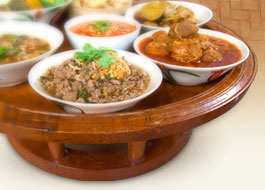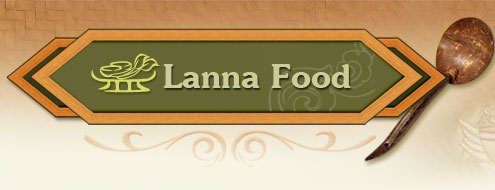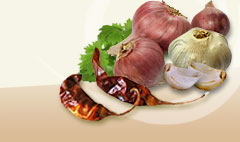Bolete Mushrooms |
|
|
 | Boletus Edulis Bull |
|
| |
 | Coletaceae |
|
| |
 | bolete |
|
| |
 | Het ha (Northern) because it is usually found growing a shrub known as ha. (Kanchana Diwiset, et al., 2005, p. 241) het phueng, het nam phueng (Northeastern) (Phak Phuen Ban Ahan Thai, 205, p. 174) het klang dong (Thawthong Hongwiwat, 2004, p. 202) |
|
| |
 | Upside down frying pan-shaped, 12-30 cm. in diameter. Young cap covered with light brown fine hair, velvet-like, yellowish dark brown when fully open. Stalk is cracked at certain places, with tubes instead of gills, large stalk base, greenish yellow or greenish brown when completely open. When cut and exposed to the air, the flesh turns bluish green, especially above the tubes upward; stalks are 3-4 cm. in diameter, 4-8 cm. long, glossy and velvet like, slightly swollen near the base; spore round, greenish brown, 5.2-6.2 X 6.6-9.4 mcm., smooth, flat, thin wall. Propagates by spores, naturally grows in humid and moist mixed deciduous forests. (Kanchana Diwiset, et al., 2005, p. 241) |
|
| |
 |

100 gm. contains iron 19.9 mg., potassium 399 mg. and phosphorus 15 mg. (Phak Phuen Ban Ahan Thai, 2005, 174)
Food: Lanna people make a spicy soup from it called kaeng het tap tao, or het ha. Sometimes they add tender shoots of tamarind or ma mao (Chinese laurel). (Dikit Kanthaklang, personal communication, June 20, 2007) |

Enhances general health as a tonic, stimulates blood circulation and reduces minor fever. (Wut Wuthithamwet, 1997, p. 493; Kanchana Diwiset, et al., 2005, p. 241) |
|
| |
 | Rainy season, around June and onward (Kanchana Diwiset, et al., 2005, p. 241) |
|
| |
 |
Kanchana Diwiset, et al., comp. (2005). Phak Phuen Ban Phak Nuea. Phennapha Sapcharoen, ed. (2nd ed.) Nonthaburi: Center for Development of Traditional Thai Medicine. Thawithomng Hongwiwat. (2005). Saranukrom Phak. (2nd ed.). Bangkok: Saengdaet. Phak Phuen Ban Ahan Thai. (2005). Bangkok: Saengdaet. Wut Wuthithamwet. (1997). Saranukrom Samunphrai: Ruam Lak Phesatchakam Thai. Bangkok: Odean Store. |
|
| |
|
|




